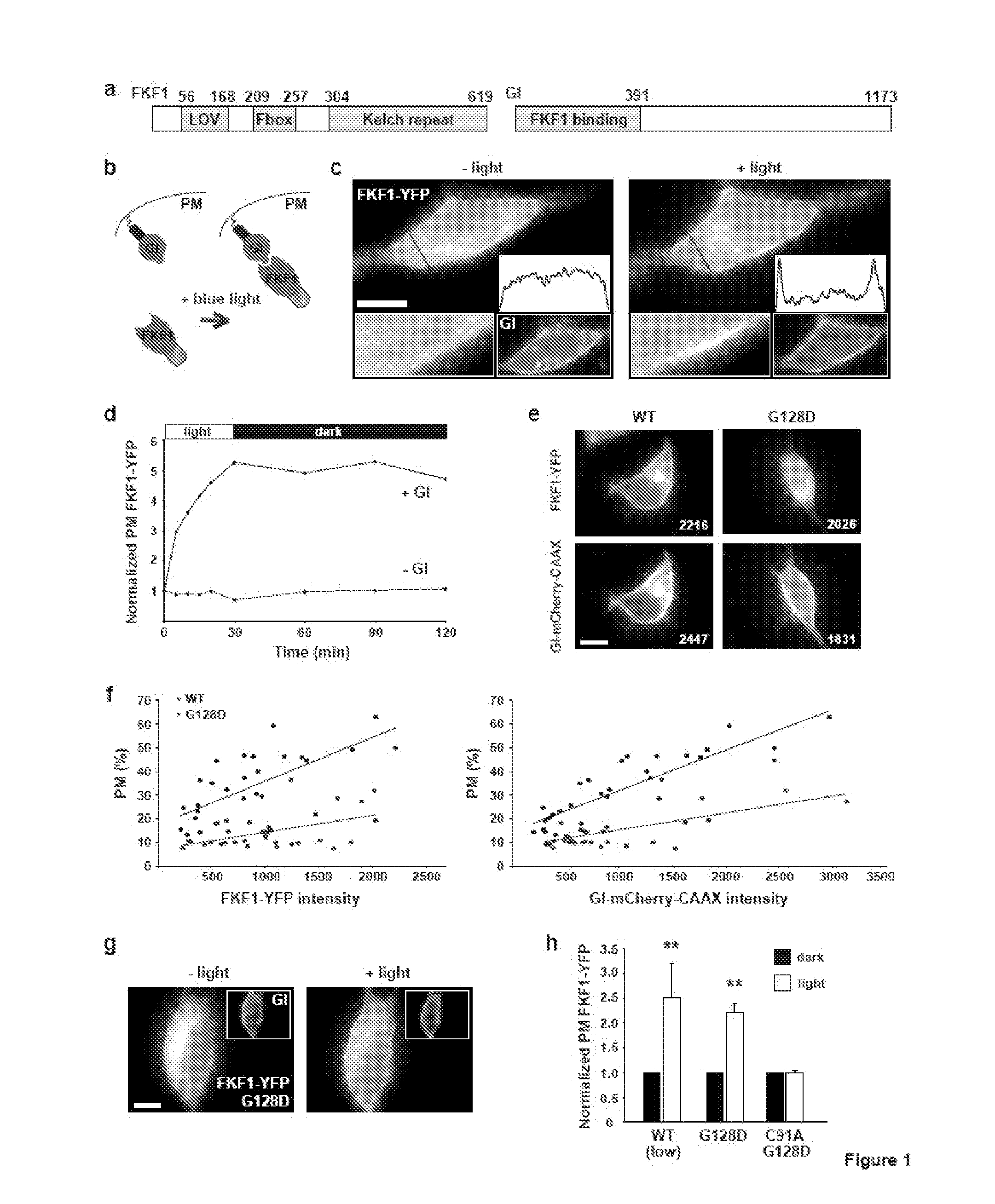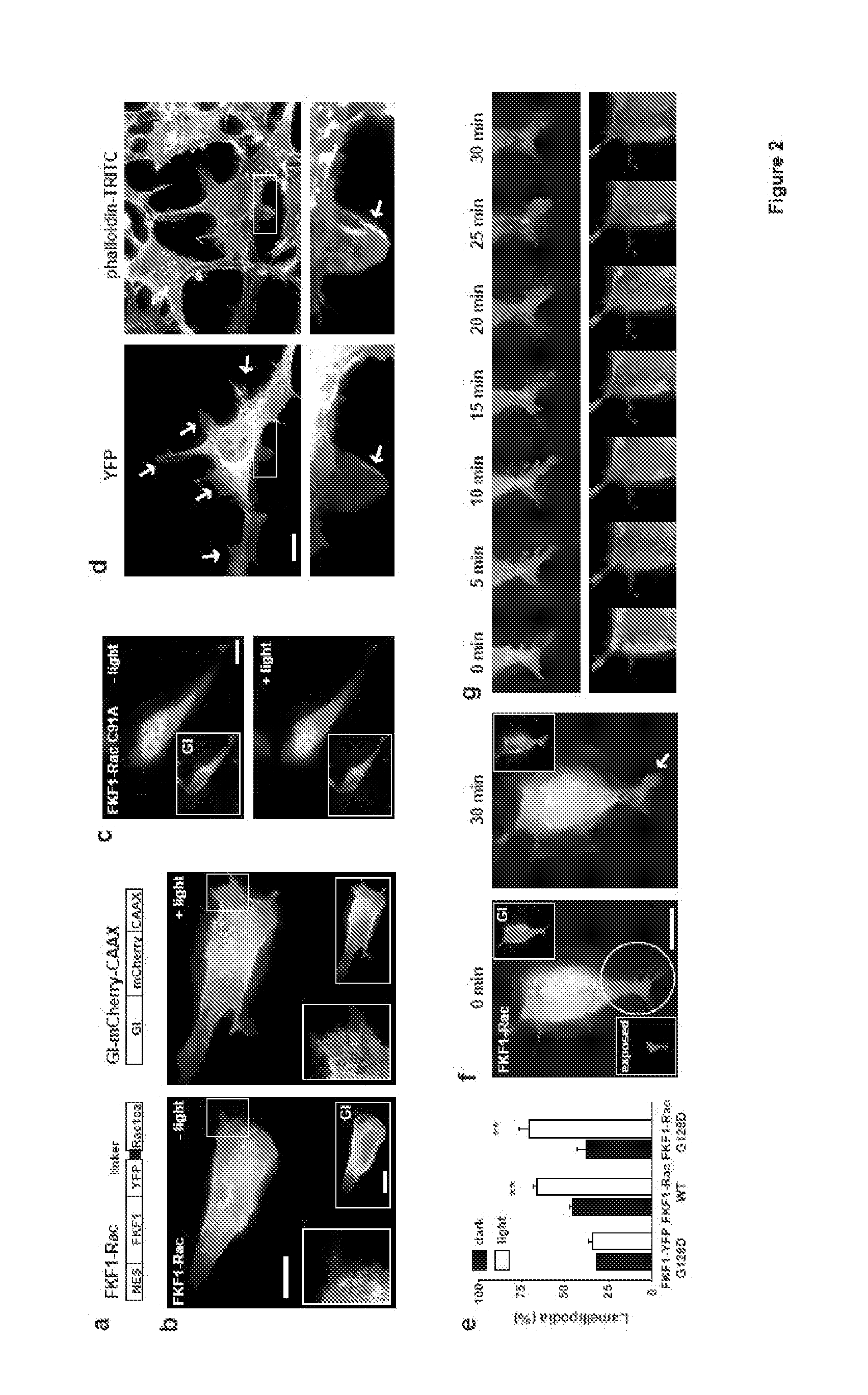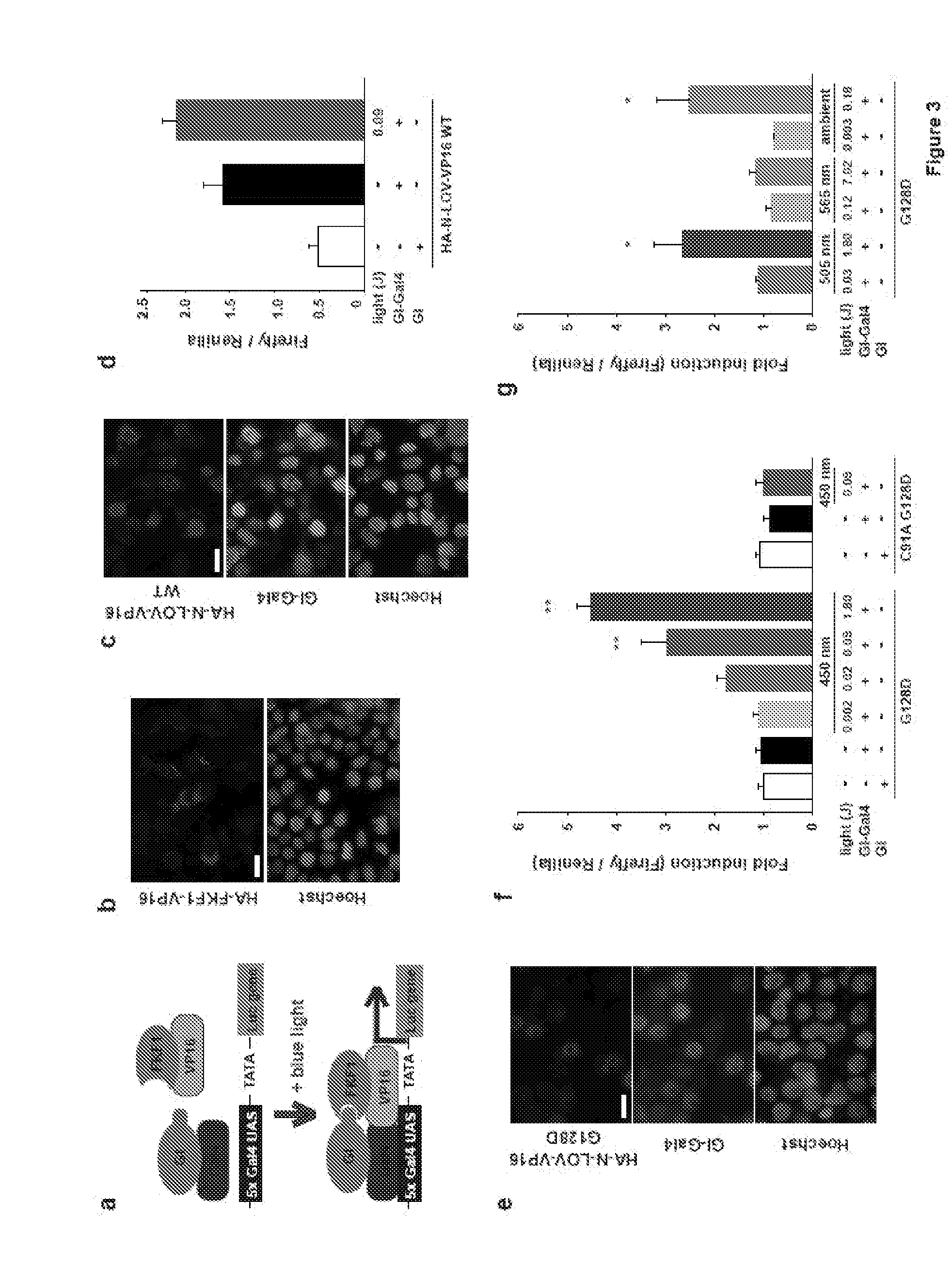Light Controlled Protein Dimerization in Cells
a technology of dimerization and light control, applied in the field of light control protein dimerization in cells, can solve the problem of not being easily applied to the study of the majority of signal transduction cascades, and achieve the effect of being easily adapted to control
- Summary
- Abstract
- Description
- Claims
- Application Information
AI Technical Summary
Benefits of technology
Problems solved by technology
Method used
Image
Examples
example 1
Development of a Genetically Encoded System for Controlling Protein-Protein Interactions in Live Cells Using Blue Light
[0087]Protein-protein interactions underlie activation of most signaling cascades in cells. We have developed a new technology called PICL (Protein Interactions Controlled by Light) to control protein hetero- and homo-dimerization in live cells using light. We modified FKF1 and GIGANTEA (GI) proteins from Arabidopisis thaliana, to generate protein tags whose interaction is controlled by blue light. We demonstrated the utility of this system by developing PICL constructs that can recruit the small G-protein Rac1 to the plasma membrane and generate local lamellipodia in response to focal illumination. We also generated a light-activated transcription factor by fusing domains of GI and FKF1 to the DNA-binding domain of Gal4 and to the transactivation-domain of VP16, showing that this technology is easily adapted to other systems. These studies set the stage for the dev...
PUM
| Property | Measurement | Unit |
|---|---|---|
| diameter | aaaaa | aaaaa |
| diameter | aaaaa | aaaaa |
| wavelength | aaaaa | aaaaa |
Abstract
Description
Claims
Application Information
 Login to View More
Login to View More - R&D
- Intellectual Property
- Life Sciences
- Materials
- Tech Scout
- Unparalleled Data Quality
- Higher Quality Content
- 60% Fewer Hallucinations
Browse by: Latest US Patents, China's latest patents, Technical Efficacy Thesaurus, Application Domain, Technology Topic, Popular Technical Reports.
© 2025 PatSnap. All rights reserved.Legal|Privacy policy|Modern Slavery Act Transparency Statement|Sitemap|About US| Contact US: help@patsnap.com



